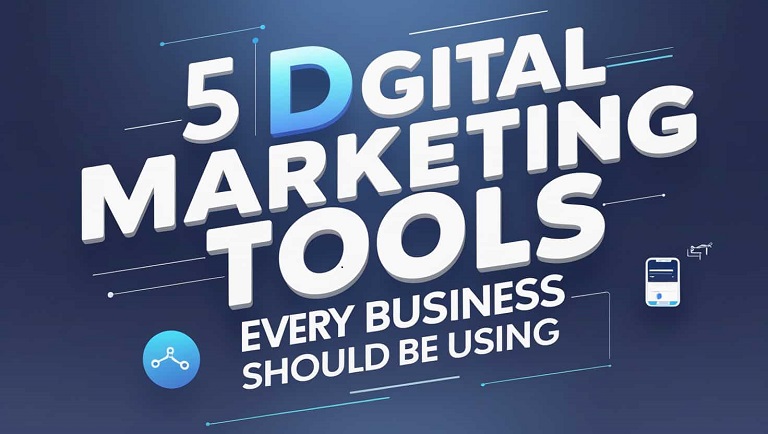What is SEO?

Can you guess the coolest thing about SEO? It’s not just some techy term—it’s the secret ingredient behind every successful online business. Whether you’re running a cozy bakery, a booming online shop, or a local service, SEO (Search Engine Optimization) can be the thing that puts your business on the map—literally. And here’s the best part: it’s a key piece of your digital marketing strategy.
Here’s the deal: in today’s digital world, if your business isn’t showing up on Google, it’s like having a storefront in the middle of nowhere. SEO is what helps you get noticed by the right people at the right time. But what exactly is SEO, and why should you care? Don’t stress—we’re breaking it all down in this guide. By the end, you’ll not only get what SEO is but also how you can use it to grow your business
What is SEO and Why Does It Matter?
SEO refers to the process of optimizing your website to rank higher on search engines like Google. Unlike paid advertising, SEO focuses on organic (non-paid) traffic, making it a cost-effective way to attract potential customers.
- Key Characteristics of SEO:
- Organic Reach: Connect with audiences who are actively searching for your products or services.
- Cost-Effective: More affordable than paid advertising methods. For example, ranking organically for a keyword can cost significantly less than running a Google Ads campaign.
- Long-Term Results: SEO efforts can continue to drive traffic long after the initial work is done.
Example: A local bakery can optimize its website for keywords like “best coffee shops near me” to attract local customers searching for coffee online. By using location-based targeting, the bakery can ensure its website appears in local search results.
How SEO Works: A Beginner’s Guide
SEO involves optimizing your website to rank higher on search engines like Google. This includes using relevant keywords, creating high-quality content, and improving website speed and user experience. An SEO expert plays a crucial role in this process by analyzing data, identifying trends, and implementing strategies to enhance visibility, drive organic traffic, and ensure the website aligns with search engine algorithms
- Key Steps in SEO:
- Keyword Research: Identify the keywords your target audience is searching for.
- On-Page Optimization: Optimize your website’s content, meta tags, and images.
- Technical SEO: Improve your website’s speed, mobile-friendliness, and security.
- Off-Page SEO: Build backlinks from reputable websites to increase your site’s authority.
- Content Creation: Create valuable content that answers your audience’s questions and solves their problems.
Example: A coffee shop owner could optimize their website for keywords like “best coffee shops near me” to attract local customers searching for coffee online.
What are the Three Main Types of SEO?
SEO encompasses various strategies. Here’s a detailed breakdown of the most common ones:
- On-Page SEO:
- On-page SEO involves optimizing individual pages on your website to rank higher and earn more relevant traffic.
- Example: A coffee shop owner could optimize their website for keywords like “best coffee shops near me” to attract local customers searching for coffee online.
- Off-Page SEO:
- Off-page SEO involves activities outside your website that impact your rankings, such as building backlinks and social media marketing.
- Example: A fitness coach could post workout videos on Instagram and use hashtags like #HomeWorkouts to reach a wider audience.
- Technical SEO:
- Technical SEO involves optimizing your website’s infrastructure to help search engines crawl and index your site more effectively.
- Example: A software company could use Google Ads to appear at the top of search results for keywords like “best project management tools.”
How do Search Engines Work?
Understanding how search engines work is crucial for effective SEO. Here’s a simplified breakdown:
- Crawling:
- Search engines use bots (called crawlers or spiders) to discover and scan websites.
- Example: Googlebot crawls billions of web pages to gather information.
- Indexing:
- After crawling, search engines index the content, organizing it into a massive database.
- Example: When you search for “best coffee shops,” Google retrieves relevant pages from its index.
- Ranking:
- Search engines rank pages based on various factors like relevance, authority, and user experience.
- Example: A well-optimized page with high-quality content and backlinks is more likely to rank higher.
Key Factors That Impact Your SEO Ranking
Several factors influence your website’s SEO ranking. Here’s a detailed breakdown of the most important ones:
- Keywords:
- Use relevant keywords throughout your website’s content, meta tags, and URLs.
- Example: A software company could use keywords like “best project management tools” in their blog posts and product pages.
- Content Quality:
- Create high-quality, engaging content that provides value to your audience.
- Example: A travel agency could write a blog post titled “10 Budget-Friendly Destinations for 2024” to attract travelers seeking affordable vacation options.
- Website Speed:
- Ensure your website loads quickly to provide a better user experience.
- Example: Use tools like Google PageSpeed Insights to identify and fix speed issues.
- Mobile-Friendliness:
- Optimize your website for mobile devices to reach a wider audience.
- Example: Use responsive design to ensure your website looks great on all devices.
- Backlinks:
- Build backlinks from reputable websites to increase your site’s authority.
- Example: A tech company could issue a press release about a new product launch and share it on its website and social media.
Common SEO Mistakes to Avoid
While SEO offers numerous benefits, it also comes with its own set of challenges:
- Keyword Stuffing:
- Avoid overloading your content with keywords, as this can lead to penalties from search engines.
- Tip: Use keywords naturally and focus on creating high-quality content.
- Ignoring Mobile Optimization:
- With over 60% of web traffic coming from mobile devices, ignoring mobile optimization can hurt your rankings.
- Tip: Use responsive design to ensure your website looks great on all devices.
- Neglecting Technical SEO:
- Technical issues like slow page speed and broken links can negatively impact your rankings.
Tip: Regularly audit your website to identify and fix technical issues.
Conclusion
SEO is a game-changer for businesses, offering unparalleled reach, targeting, and measurability compared to traditional methods. Whether you’re a small business owner or an aspiring entrepreneur, understanding SEO can help you grow your brand and connect with your audience like never before. Ready to take the first step? Start by defining your goals and exploring one or two SEO strategies. Share your thoughts or questions in the comments below—we’d love to hear from you!
FAQs About SEO
What is the best SEO strategy for small businesses?
Start with on-page SEO and content marketing. They are cost-effective and offer high ROI for small businesses. For example, a local bakery could use Instagram to showcase its products and attract nearby customers.
How much does SEO cost?
Costs vary depending on the strategy. On-page SEO can be relatively low-cost, while off-page SEO may require a budget for link-building.
Thinking about hiring an SEO expert? Before you make a decision, here are some key factors to keep in mind to ensure you’re making the right choice.
What are the most common SEO mistakes to avoid?
Common SEO mistakes include keyword stuffing (overusing keywords), ignoring mobile optimization, having slow page load times, not using header tags properly, and neglecting backlinks or duplicate content.
How long does it take to see results from SEO?
SEO can take 3-6 months to show results, depending on the competitiveness of your industry and the quality of your efforts. For example, a well-optimized website can start driving traffic within weeks.
Free SEO Audit
Are you looking to improve your website’s search engine performance but don’t know where to start? I offer a free 5-minute SEO audit to give you a quick snapshot of how your site is performing.


